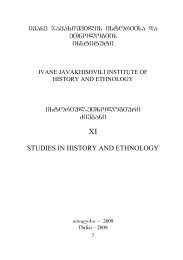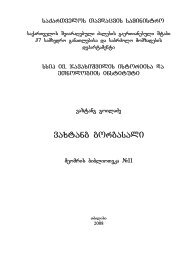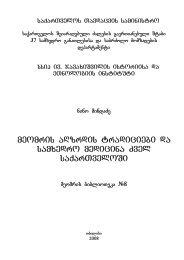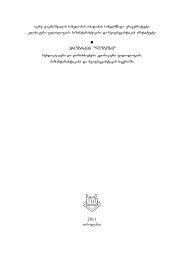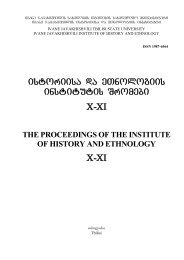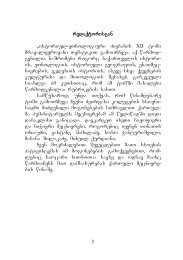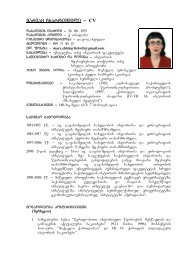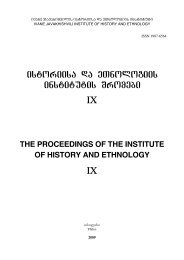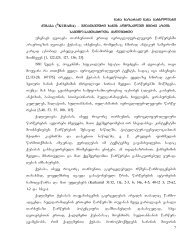programa "logosi"
programa "logosi"
programa "logosi"
Sie wollen auch ein ePaper? Erhöhen Sie die Reichweite Ihrer Titel.
YUMPU macht aus Druck-PDFs automatisch weboptimierte ePaper, die Google liebt.
the hereto unknown Indo-European language, the so-called "Euphratic"<br />
originally spoken in Mesopotamia in the third millennium BC. While the<br />
destiny of this obviously controversial claim remains uncertain for the time<br />
being, some of the suggested equations are amenable to the reinterpretation<br />
as borrowings from a third source. Among these, Arm. darbin vs. Sum.<br />
tabira / tibira represents the most obvious case.<br />
2. The survey of possible Indo-European etymologies of Old Armenian<br />
hiwand ‘ill’ is given in Jahukian, 1987: 185. Out of the three suggested<br />
proto-forms, *pēp…to-, pēiw…to-, and pēim…to-, none is backed by good<br />
Indo-European lexical cognates. The root level comparison with Sanskrit<br />
pāpman- ‘evil, suffering, sickness, sin, demon’ is not precise enough, while<br />
Greek. ’α-πήμαντος ‘un-harmed, un-hurt’ can be adduced only on the assumption<br />
of the irregular sound change *-m- > -w- in Armenian.<br />
The Iranian comparanda of this form include MPers. hy(w)ndkyh<br />
/xindagīh/ ‘illness’, an equivalent of Av. axti- ‘illness’ preserved in the<br />
Middle Persian translation of the Avesta, as well as Manichean Middle Persian<br />
xyndg ‘sick, ill’. After the Middle Persian forms were identified by a<br />
Saint-Petersburg Iranologist Karl Salemann around 1908, his colleague<br />
Nikolaj Marr immediately suggested that they display the same contraction<br />
of the intervocalic –w- as MPers. zindag ‘alive’, presumably going back to<br />
the Iranian root √ jīw ‘to be alive’, while the Armenian borrowing hiwand<br />
preserves to us a more archaic formation (Salemann 1908: 92-3). Unfortunately,<br />
N. Marr is mainly known not through his important philological<br />
work, which he mostly conducted during the early period of his life, but<br />
rather due to his later "New Linguistic Doctrine", a bizarre theory that denied<br />
the comparative-historical method in linguistics and linked language<br />
history with social progress and class struggle. According to this theory, all<br />
the languages of the world ultimately the result of the interplay of four diffuse<br />
elements SAL, BER, YON and ROŠ.<br />
Marr’s adherence to these peculiar views brought about the prejudice<br />
against his earlier work on the part of many Armenologists. For the most<br />
part of the 20 th century, Arm. hiwand continued to be assigned to the Indo-<br />
European stock, and only the recent book by Olsen 1999 (p. 303, fn. 229)<br />
has re-established the Iranian connection of the Armenian word, without<br />
mentioning the original author of this suggestion. This comparison precludes<br />
Indo-European proto-forms beginning with p- since the sound change<br />
*p-> h- is not attested in Iranian. Olsen did not clarify, however, either the<br />
precise origin of the Armenian borrowing, or its etymology within Iranian.<br />
I suggest that the Armenian word was borrowed from Parthian, rather<br />
than Middle Persian. The contrast between Parth. žīwandag attested in Ma-<br />
269





